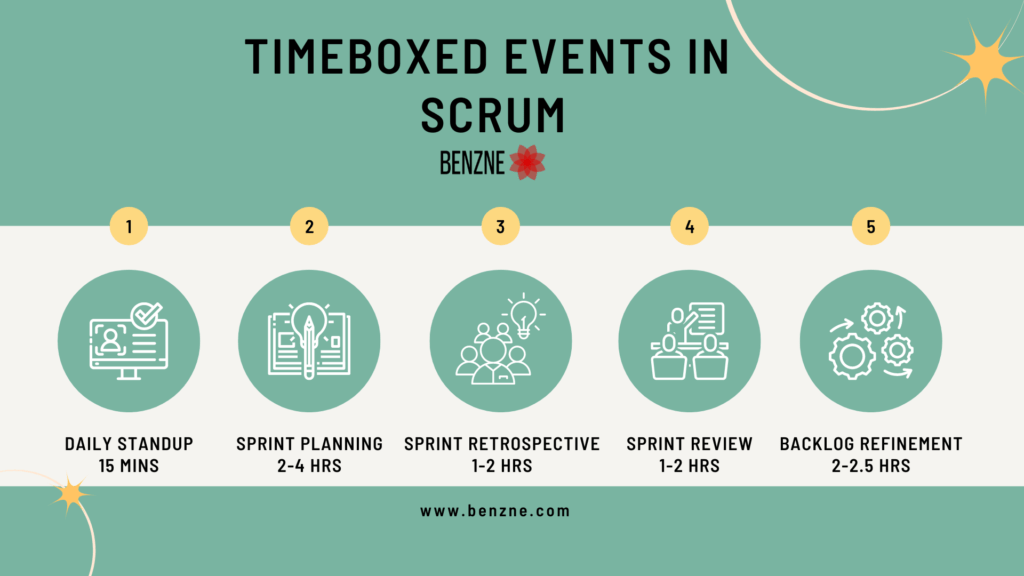We have finite time at hand for everything in this world. As human beings we often don’t place a start and end time for many activities of our life. As a result we procrastinate and the activities in the to-do list keep moving to the next slot on the timeline/calendar. Activities in which we expect end results or outcomes need to have fixed duration to operate to help us –
- Get a sense of accomplishment & validation
- Focus & prioritize
- Improve our problem solving skills within constraints
- Teach us how to close or end things organically
- Plan our life to be more productive
What is Timeboxing?
The commonly used time management technique of charting a start and end time is called a timebox . When an event/activity/task is time boxed we try hard to stick to the context or agenda instead of moving away from the action point. The other areas or tasks take a back seat . Focussing on the activity at hand within a time box improves the chances of completion.
One of the techniques commonly used for time management is Pomodoro. Below is how it works –
- Set a timer to complete a planned activity within the timebox
- As a prerequisite, announce prior about the time boxed activity you are starting to avoid any distractions from the outside world
- Turn off any call/mail/social media notifications
- Get into “ Do Not Disturb” mode to favor the cause
- Go with short, manageable time durations
By working in this manner we consciously avoid multitasking and aim to prioritize the important tasks on the “ To do “ list. When the end time is not present, we as humans tend to extend the work in hand until you come across another event which forces you to end the task at hand. So the question is how to bring timeboxing as a habit into our lives. Few tips that would help in inculcating this habit.
- Start with shorter durations. Set a timer for these.
- Start with a “ To do “ list and pick up the ones which are urgent versus important.
- Treat yourself to goodies if you are able to complete significant amount of planned work to motivate yourself for the next one.
- Have a partner who can work in the same time box to drive you.
- Mark the completed items to feel the sense of accomplishment.
Just like for any habit formation, consistency and practice are key.
How is Timeboxing used in Scrum?
The concept of time boxing is widely used in agile project management practices. In the scrum framework the work is done in iterations which are time-boxed and have fixed start and end dates. All the iterations should be of the same duration or length. When one iteration or sprint is completed the next sprint starts immediately. Just like program increments which are of 3 month duration consisting of 5-6 iterations of 2 week length are also time boxed. Not only are these time-boxed, they also maintain the same cadence.
What are Time-boxed Events in Scrum?

This time management technique of timbering helps the teams to manage, prioritize work and manage scope. The events of scrum ceremonies are also time boxed.
The time boxed events in Scrum are listed below
- Daily Stand Up : 15 minutes
- Sprint Planning 2-4 Hrs
- Sprint Retrospective- 1-2 Hrs
- Sprint Review – 1-2 Hrs
- Backlog Refinement – 2-2.5 hrs
The above durations have to be decided prior to the start of the project.The timebox duration is based on size of the team and the length of an iteration . The iterations are timeboxed meaning the start and end dates don’t change even if the functionality changes or is dropped.
Benefits of timeboxing in scrum
Listed below are some of the benefits of timeboxing work in iterations
- When work is planned as per the time boxed duration,it forces us to prioritizes the work items which have higher value
- Progress of a work item can be noted as the end date is fixed. This allows the team to figure out what percentage of work is remaining
- By fixing an end date we are forcing ourselves to take work to completion rather than starting work on a new item
- By time boxing and putting an end date team members feel sense of accomplishment when work items are taken to completion
- Sense of urgency to finish the goals by the end date is established
- When certain number of work items are completed in a iteration, we can predict with a lot of certainty on how much work will be completed in future iterations as all iterations operate in same duration/length
Do let us know what are some of the timeboxing hacks which have worked for you. If your teams are struggling in agile adoption or getting the right benefits from agile, do drop us a note at “ consult@benzne.com ” and we will be glad to set up a discussion.
Unlock potential with expert Agile Transformation Services. Deliver faster, adapt to change, and foster innovation with proven methodologies.
Sudha Madhuri B
Agile Consultant

